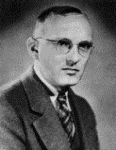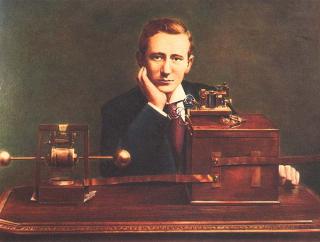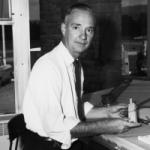Radio Astronomy |
| ||
|
by VU2FD | |||
| Home | Forum | Astronomy News | Amateur Radio |
|
Educational |
|
Resources |
| Amateur Radio | |
| Radio Astronomy | |
| Ayurveda | |
| Yoga | |
| Gita | |
| Web Directory | |
| Amateur Software | |
| News Channels | |
| Shopping Mall | |
| Free Classifieds | |
| Photo Gallery | |
| |
|
| |||||||||
|
| ||||||||
| Download Basics of Radio Astronomy in PDF format: | |||||||||
| Introduction | |||||||||
| Discovering an Invisible Universe | |||||||||
| The Properties of Electromagnetic Radiation | |||||||||
| The Mechanisms of Electromagnetic Emissions | |||||||||
| Effects of Media | |||||||||
| Effects of Motion and Gravity | |||||||||
| Sources of Raio Frequency Emissions | |||||||||
| Mapping the Sky | |||||||||
| Our Place in the Universe | |||||||||
| Glossary, References and Further Reading | |||||||||
|
History of Radio Astronomy? | |||||||||
|
Radio
Astronomy
is a
direct
descendant
of Amateur
("ham")
radio.
Following Guglielmo Marconi's (photo above) successful transatlantic communications in 1901, commercial use of radio mushroomed. Ships were equipped with radio, huge commercial stations were set up to handle intercontinental messages after the fashion of the telegraph companies, and many other uses were found for the new technology. Want to know more about Marconi & Invention of Radio? Click here.......
| |||||||||
|
In those
days, it
was
thought
that the
only
really
useful
frequencies
for
long-range
communication
were the
very low
frequencies,
or the
very long
wavelengths.
Thus, when
the first
government
regulations
were
imposed on
radio in
1912, the
amateur
operators
("hams"),
whose
interest
in radio
was
personal
and
experimental,
rather
than
commercial,
got the
short end
of the
stick.
They were
given the
use of
wavelengths
of 200
meters and
shorter -
roughly
the
frequencies
above the
current AM
broadcast
band.
These were
generally
thought
useless
for
long-range
communication.
The wavelength restrictions were rather loosely enforced prior to U.S. entry into World War I in 1917, when all amateur and other non-government use of radio was shut down. When amateur operations resumed in 1919, it was much more imperative to abide by the rules, so the hams had to find out just what they could do with the short waves. Starting in 1921, amateurs made concerted, organized efforts to communicate across the Atlantic with short waves. In December of 1921, an amateur station in Connecticut was heard by an American amateur sent to Scotland with state-of-the-art receiving equipment. On November 27, 1923, amateurs in the U.S. and France made the first transatlantic two-way contacts on short-wave frequencies. In the following two months 13 European and 17 American amateur stations had made two-way transatlantic short-wave contacts. Within a year, amateurs had communicated between North and South America, South America and New Zealand, North America and New Zealand, and London and New Zealand. These accomplishments proved beyond a doubt that ionospheric refraction could enable world-wide communication by short-wave radio. Further amateur experiments showed that, by using a variety of frequencies in the short-wave region (3-30 MHz), long-range communication could be maintained both day and night. In addition, the short-wave communications were accomplished with transmitters of only modest power, unlike the giant, many-kilowatt transmitters needed for long-range communication at the lower frequencies. Naturally, once the hams showed the value of short-wave radio, many commercial firms became interested. One of these commercial interests was the telephone company, which thought that short-wave links might be used to carry intercontinental telephone calls, saving the expense of laying cable on the ocean floor. However, as any ham or short-wave listener today knows, short-wave communication is subject to much noise and static. The telephone company sought to identify and find ways to mitigate this noise. | |||||||||
|
At AT&T Bell Labs in New Jersey, a young radio engineer named Karl Jansky (left) was given the task of identifying the sources of short-wave noise. He built a highly directional antenna to work at about 22 MHz, and began to make systematic observations. Most of the noise he found was due to thunderstorms and other terrestrial causes. However, he found one source of static that seemed to appear four minutes earlier every day. As most amateur astronomers know, that is a telltale sign of something beyond the Earth. Indeed, what Jansky had found was radio noise emitted from the center of our own Milky Way Galaxy. He discovered this in 1932 and announced it in 1933. His announcement was reported on the front page of the New York Times on May 5, 1933.
| |||||||||
 Karl
Jansky
Karl
Jansky
To most professional astronomers, Jansky's discovery was a mere curiosity, and they did not follow up on it. In Wheaton, Illinois, the news eventually reached Grote Reber, another radio engineer who was an avid ham operator. Reber had spent much time making long-distance contacts on the amateur short-wave bands. He had "worked" all continents and 60 foreign countries. In those days, that was quite an achievement, and it left Reber thinking, as he later wrote, "that there were no more worlds to conquer." When he read of Jansky's discovery, he found some more worlds. | |||||||||
|
In 1937, Reber built his own 32-foot-diameter parabolic dish antenna in his backyard, to seek cosmic radio emissions. In an era when artificial satellites were only a dream and television had not yet emerged from the laboratory.
Today, the connection between radio astronomy and amateur radio remains strong. Many prominent radio astronomers first became interested in science through involvement with amateur radio as youngsters. These include the winner of the 1993 Nobel Prize in Physics, Dr. Joseph Taylor of Princeton University. Nearly 10 percent of the employees of the National Radio Astronomy Observatory are licensed amateurs In 1997, the National Radio Astronomy Observatory Amateur Radio Club obtained a license from the Federal Communications Commission for an amateur radio station with the call sign W9GFZ, Grote Reber's call sign in the 1930s. No longer active as a ham, Reber still expressed pleasure that his old call sign would be preserved by NRAO's hams. The NRAO club plans to use the call sign W9GFZ on the air for special events connected with radio astronomy. | |||||||||
|
| |

 Grote
Reber/W9GFZ
Grote
Reber/W9GFZ